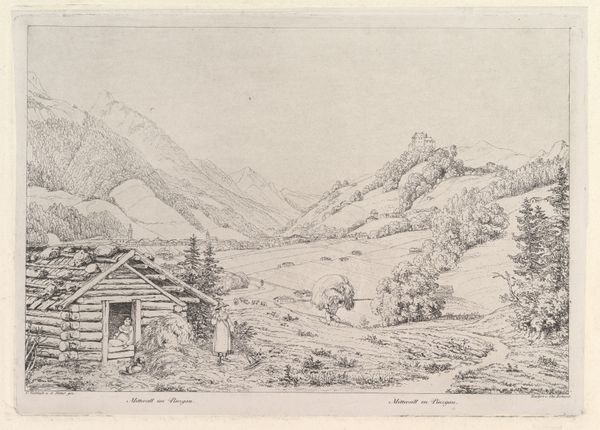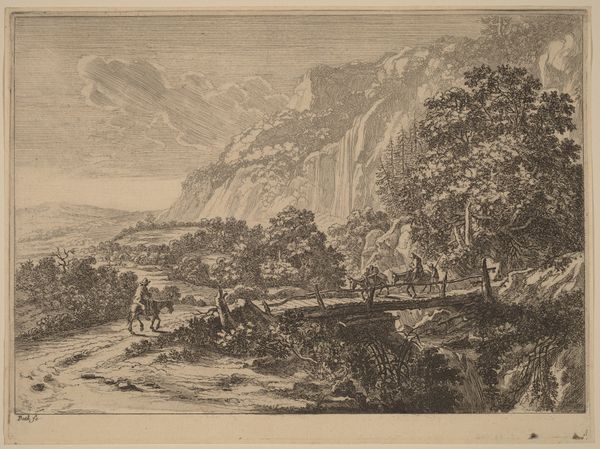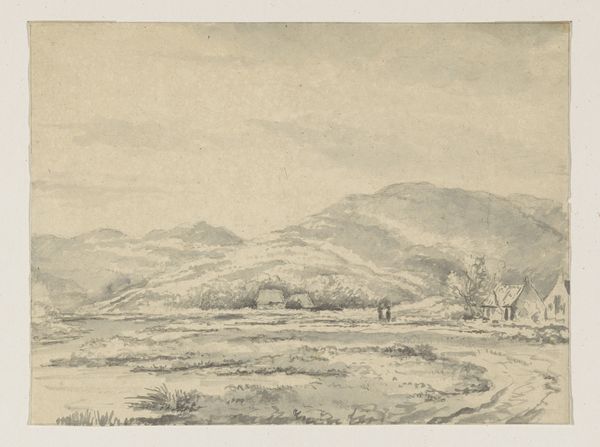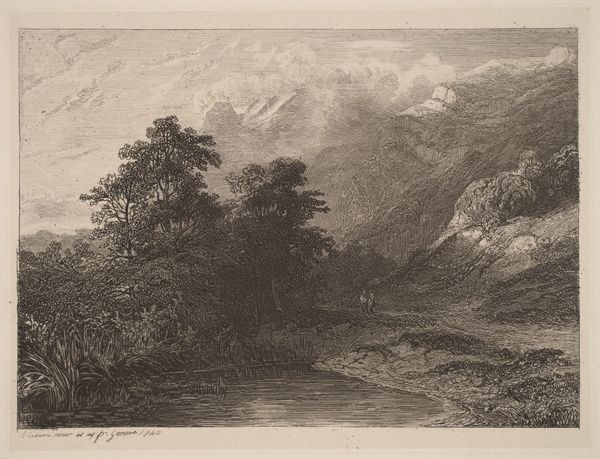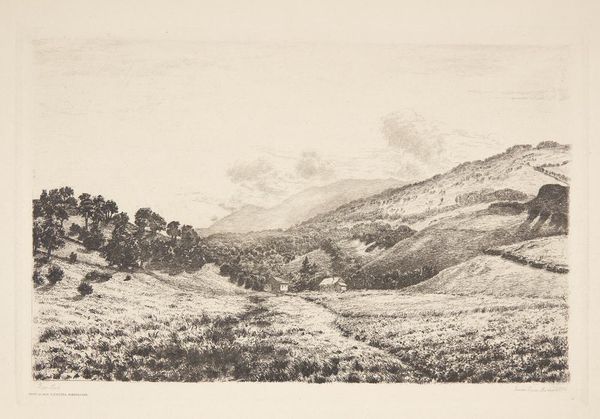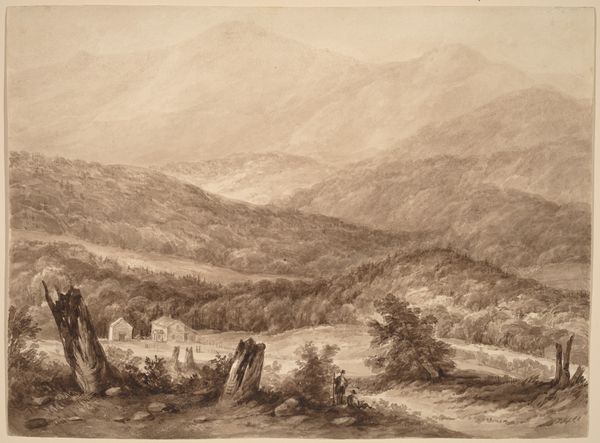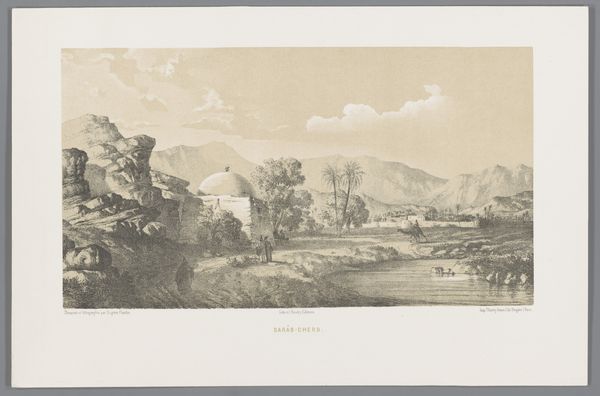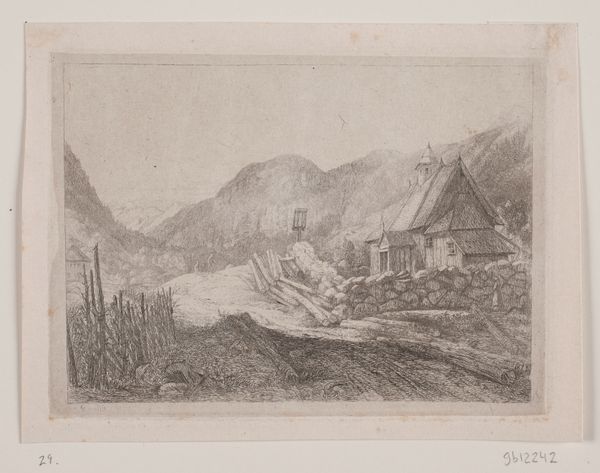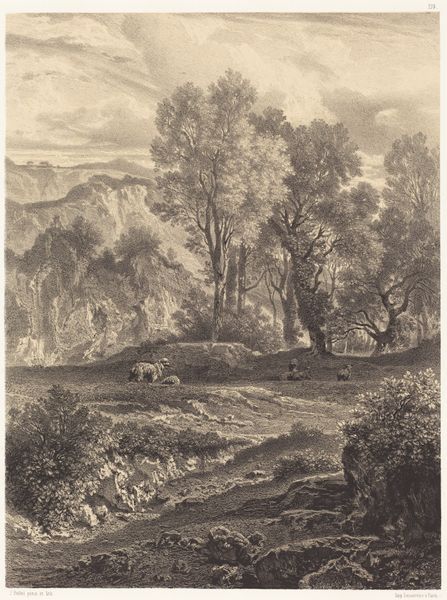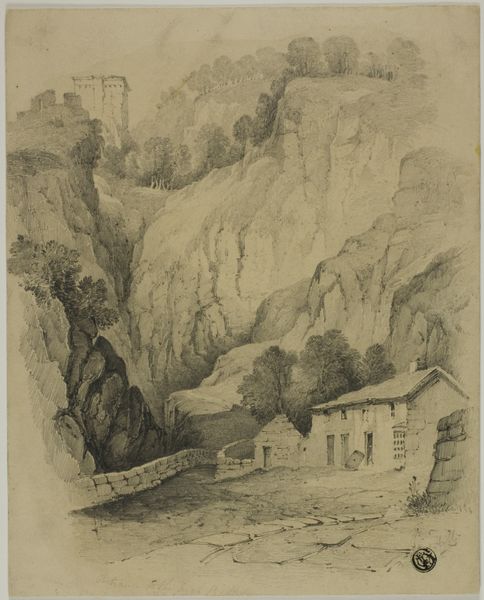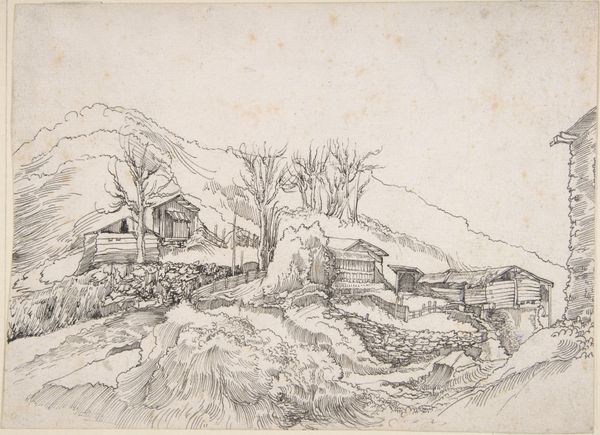
print, etching, engraving
# print
#
etching
#
landscape
#
etching
#
romanticism
#
line
#
engraving
#
realism
Dimensions: 143 mm (height) x 262 mm (width) (plademaal)
Editor: This is "Bjergparti ved Meiringen," or "Mountain Scene near Meiringen," by J.P. Møller, created in 1833. It's an etching and engraving. It’s incredibly detailed for its size! The tiny figures really capture the scale of the mountains, but I wonder why those details felt important to include at all. What strikes you when you look at this? Curator: What strikes me is the romantic pursuit of the sublime manifested in a very specific socio-political context. Landscapes weren’t just pretty pictures; they were tied to ideas of national identity and pride. Consider Denmark in the 1830s; it's a period of national awakening, looking back to a perceived glorious past. Editor: So, this isn't just a scene; it's making a statement about Denmark? Curator: Precisely! The seemingly objective rendering of nature becomes a stage for constructing a national narrative. Møller chose this specific landscape. Switzerland’s mountains aren't Danish! Why depict Switzerland at all? Perhaps, Denmark could align itself with other picturesque countries that would offer cultural and political benefits? Consider how access to art like this was controlled: who saw it, and what message did they receive? Editor: So, it's not about individual appreciation of art, but about how this art participates in constructing and disseminating power and ideas. Curator: Exactly. This wasn't simply a depiction of the Swiss Alps; it was an active agent in shaping cultural values and solidifying socio-political meanings. Editor: I never thought about landscape art as being so tied to politics and national identity. That’s given me a lot to think about. Curator: It’s a reminder that even seemingly neutral representations are embedded in intricate webs of cultural and historical meaning. Looking closer can reshape what art meant then and its relevance today.
Comments
No comments
Be the first to comment and join the conversation on the ultimate creative platform.

